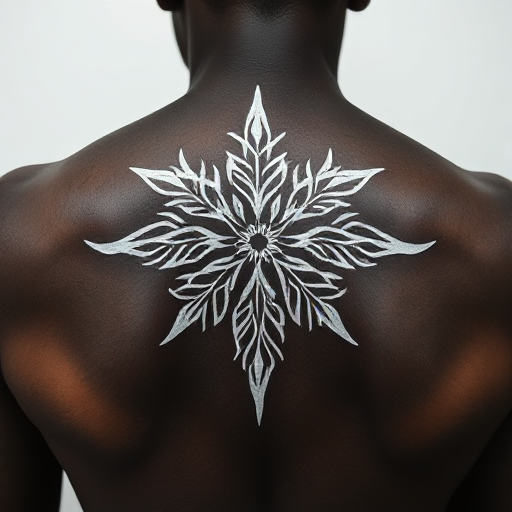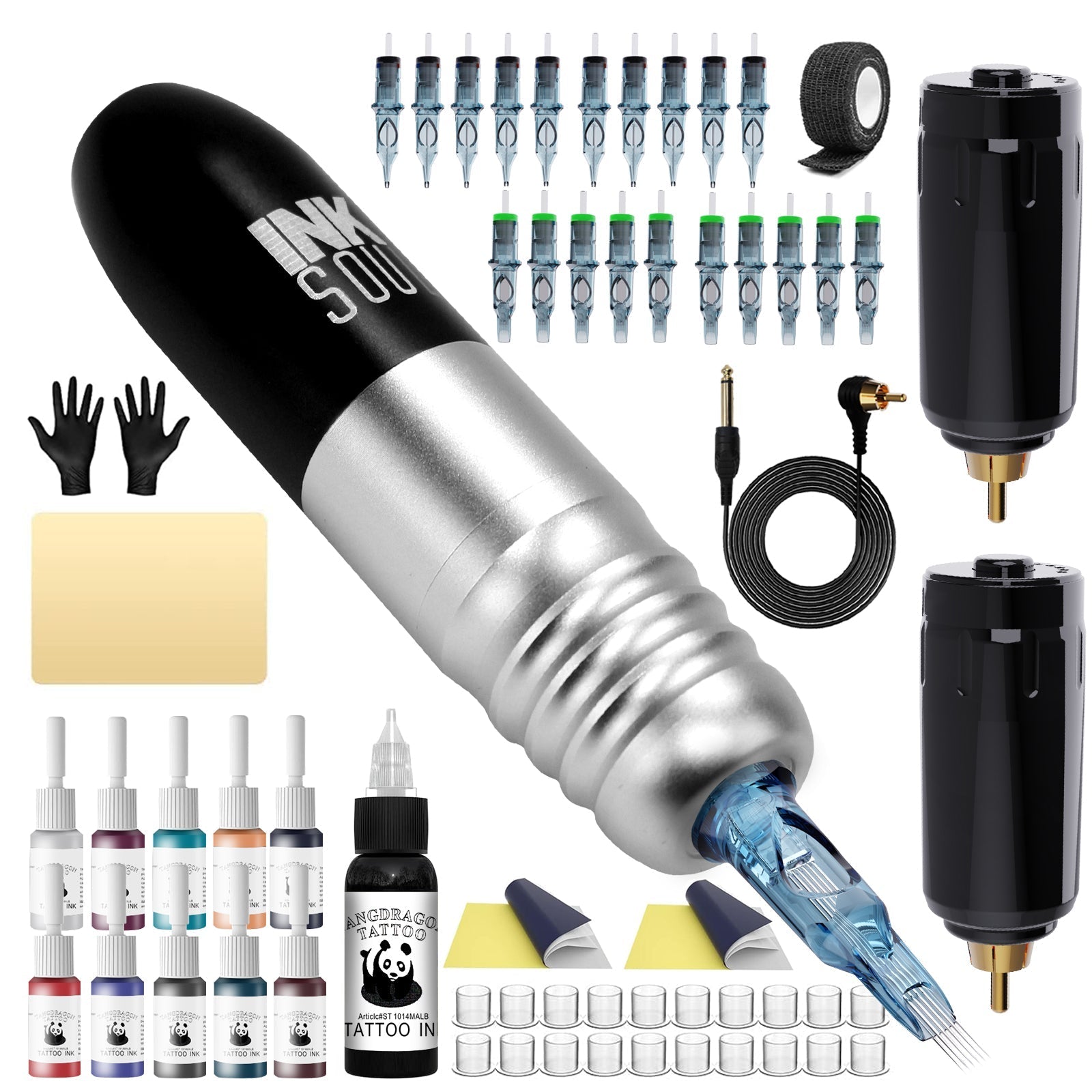Tattoos have become an increasingly popular form of self-expression, with people using ink to tell stories, commemorate experiences, or simply decorate their bodies. While traditional black ink tattoos have been around for centuries, white tattoos are a more modern trend that has caught the attention of many. However, if you have dark skin, you may wonder how well a white tattoo will show up and how long it will last. In this article, we’ll delve into the specifics of white tattoos on dark skin, the factors that affect their longevity, and what you can do to ensure they remain vibrant.

Table of Contents
- Introduction: What Are White Tattoos?
- Challenges of White Tattoos on Dark Skin
- How Long Does a White Tattoo Last on Dark Skin?
- Factors That Affect the Longevity of White Tattoos
- 4.1 Skin Tone
- 4.2 Tattoo Placement
- 4.3 Aftercare and Healing Process
- 4.4 Ink Quality and Technique
- How to Take Care of a White Tattoo on Dark Skin
- Can White Tattoos Be Repaired or Touched Up?
- The Role of Tattoo Technology: How Stencil Machines Can Help
- Common FAQs about White Tattoos on Dark Skin
- Conclusion
Introduction: What Are White Tattoos?
White tattoos use white ink, which is much lighter than traditional black ink, giving the tattoo a subtle, almost ethereal look. These tattoos often feature fine lines, delicate designs, and are perfect for those who want a more understated, elegant design. However, because of the nature of white ink, it may not show up well on all skin tones, particularly those with darker shades.
Unlike traditional tattoos that rely on bold, dark pigments to create contrast against the skin, white tattoos are meant to be more delicate and subtle. This makes them a popular choice for people who want tattoos that are more discreet, and they are often chosen for designs that are intricate or fine-lined.
Why Are White Tattoos Popular?
White tattoos are appealing for several reasons:
- Subtle Appearance: They offer a soft, minimalistic look that is less likely to stand out.
- Elegant Designs: They work well for intricate, fine line art and can look very sophisticated.
- Camouflage or Scar Cover: Some individuals get white tattoos to cover scars or stretch marks, as the subtle ink doesn’t create harsh lines or contrast.
However, there are challenges associated with white tattoos on darker skin tones, which we’ll explore in detail below.
Challenges of White Tattoos on Dark Skin
While white tattoos may look stunning on lighter skin, achieving the same effect on dark skin can be challenging. Some of the most notable difficulties include:
1. Visibility and Contrast
White ink doesn’t have the same level of contrast on dark skin as it does on lighter skin. Darker skin naturally produces more melanin, which can cause white ink to blend in more than it would on fairer skin tones. As a result, the tattoo may appear faded or less visible after healing.
2. Fading Over Time
White tattoos tend to fade faster than tattoos made with darker ink. On dark skin, this fading may be more noticeable, as the tattoo can appear to blend into the skin or lose its vibrancy more quickly than on lighter skin.
3. Healing Process
The healing process for white tattoos on dark skin can be more difficult to predict. Darker skin may not absorb ink as easily, which could lead to uneven healing. White ink, in particular, may not settle into the skin as well, leading to patches where the ink fades or disappears entirely.
Despite these challenges, it is possible to achieve a beautiful white tattoo on dark skin, though the longevity and vibrancy may vary depending on several factors.
How Long Does a White Tattoo Last on Dark Skin?
White tattoos, in general, tend to fade more quickly than tattoos made with darker pigments. This is especially true for dark skin tones, as the lack of contrast can make the fading more noticeable.
The longevity of a white tattoo on dark skin can vary significantly depending on several factors:
- Aftercare: Proper care during the healing process is essential for maintaining the tattoo’s quality.
- Skin Type: People with oily or sensitive skin may experience faster fading, as the tattooed area may heal less effectively.
- Tattoo Design: Larger tattoos may last longer than smaller, finer tattoos because they tend to hold more ink.
- Exposure to Sunlight: UV exposure is one of the main contributors to tattoo fading, especially for white ink tattoos.
Typically, a white tattoo on dark skin may last anywhere from 1 to 5 years, but it can fade more quickly depending on how well it’s cared for.
Factors That Affect the Longevity of White Tattoos
Several factors contribute to the fading or longevity of white tattoos on dark skin. Let’s break down the most influential ones:
4.1 Skin Tone
The deeper the melanin in your skin, the harder it may be for white ink to stand out. For individuals with darker skin, the tattoo may blend in more easily with their natural skin tone. Lighter patches in the tattoo may fade away quickly, especially if the skin is exposed to UV rays.
4.2 Tattoo Placement
The location of your tattoo plays a major role in how well it will hold up. Areas of the skin that experience friction or constant movement (like elbows, knees, or hands) tend to cause tattoos to fade faster. For white tattoos on dark skin, choosing a more protected area like the upper arm or back may lead to better results.
4.3 Aftercare and Healing Process
As with all tattoos, proper aftercare is essential for the healing process. Keeping the tattoo clean and moisturized, and avoiding direct sunlight during the initial healing stages, will help the ink settle into the skin and retain its appearance.
4.4 Ink Quality and Technique
The quality of the ink used and the expertise of the tattoo artist will greatly influence the final result. High-quality, professional-grade ink tends to last longer and look more vibrant. Additionally, experienced tattoo artists will use proper techniques that help the ink settle evenly into your skin.
How to Take Care of a White Tattoo on Dark Skin

Proper aftercare is critical for any tattoo, but even more so for white tattoos on dark skin. Follow these steps to help your tattoo heal properly and maintain its appearance:
- Keep It Clean: Clean the tattoo with mild soap and water to remove excess ink, blood, or other residue.
- Moisturize: Use a fragrance-free moisturizer or specialized tattoo ointment to keep the tattoo hydrated and promote healing.
- Avoid Sun Exposure: UV rays can cause tattoos to fade prematurely. Always apply sunscreen over your tattoo if it’s exposed to sunlight.
- Avoid Scratching or Picking: As your tattoo heals, it may itch or peel. Avoid scratching, as this can cause the ink to fade or lead to scarring.
- Stay Hydrated: Drinking plenty of water helps maintain skin elasticity and supports the healing process.
Can White Tattoos Be Repaired or Touched Up?
Yes, white tattoos can be touched up if they fade or lose their vibrancy over time. A touch-up session involves adding more ink to the tattoo to restore its brightness. However, white ink touch-ups can sometimes be more challenging than dark ink touch-ups, as the skin may need to be re-prepared for the new ink.
It’s always important to consult with a professional tattoo artist who has experience working with white ink to ensure the best results.
The Role of Tattoo Technology: How Stencil Machines Can Help

Using advanced tattoo technology, like the INKSOUL®️ Upgraded A3 Bluetooth Tattoo Stencil Printer, can improve the tattoo application process. This machine helps artists create precise, clean stencils for larger-scale designs, ensuring that the white ink is applied accurately to the skin.
With INKSOUL®️, artists can transfer high-quality stencils, reducing the chance of mistakes and improving the overall quality of white tattoos on dark skin. The printer works seamlessly with A3/A4 stencil transfer paper and is compatible with IOS/Android/Windows systems, making it a versatile tool for modern tattoo artists.
Common FAQs about White Tattoos on Dark Skin
1. Do white tattoos show up on dark skin?
White tattoos can be harder to see on dark skin due to the lack of contrast. However, they can still be visible, especially if the design is bold and the tattoo is placed in a non-friction area.
2. How long does it take for a white tattoo to heal?
Like any tattoo, white tattoos generally take 2-4 weeks to heal. However, the healing process may vary depending on factors such as placement and aftercare.
3. Can I get a white tattoo if I have dark skin?
Yes, you can get a white tattoo on dark skin, but it’s important to have realistic expectations about how visible it will be and how long it will
last. Proper care and an experienced tattoo artist are essential for achieving the best results.
Final Toughts
White tattoos on dark skin can be a stunning and unique form of body art, but they do come with their challenges. Understanding the factors that affect their longevity, as well as taking proper care during the healing process, can help ensure that your tattoo stays vibrant for as long as possible. With the right tattoo artist and aftercare, you can enjoy your white tattoo for years to come.



